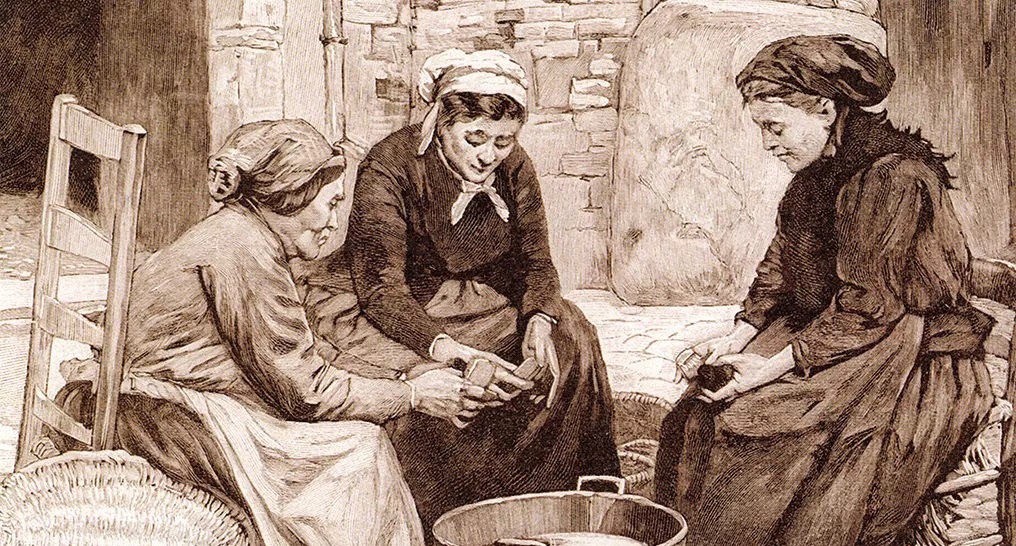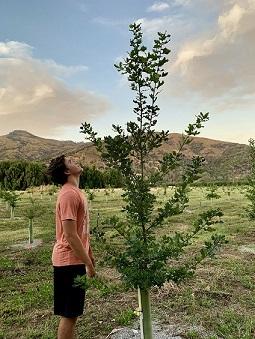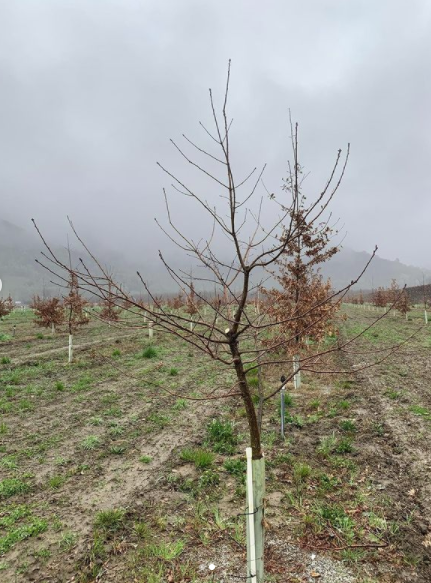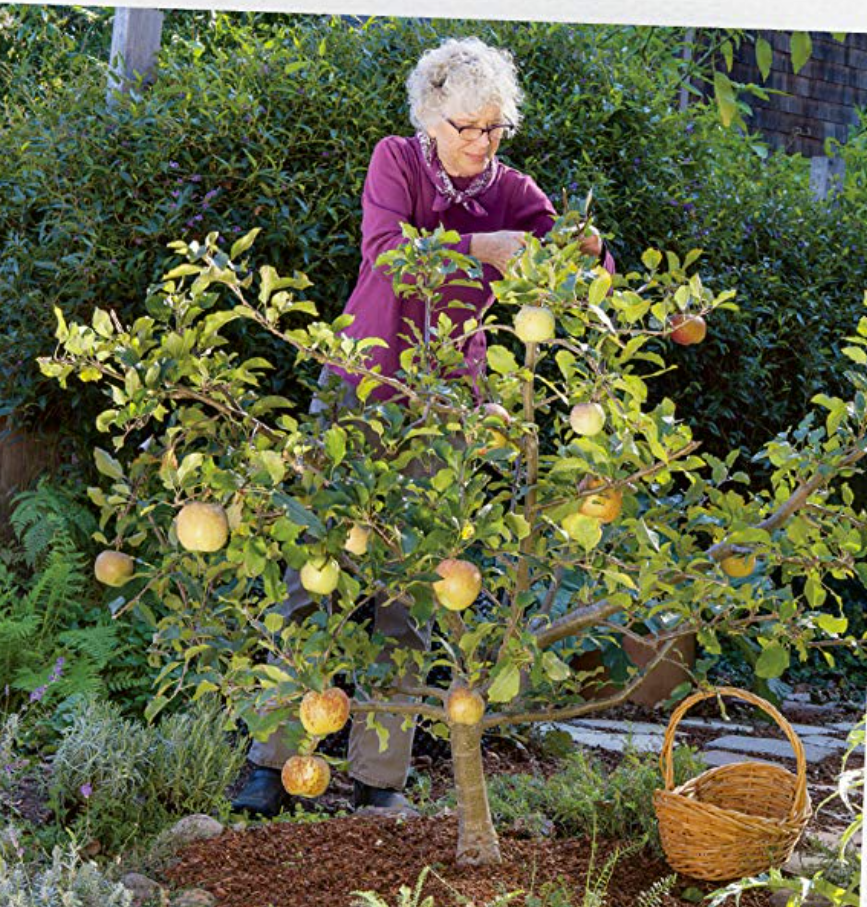
Should we top these trees?
We are blessed with a very fertile soil, and most of the trees are growing very fast; too fast? The tree in the picture is a English White Oak (Q. […]
Home › Forums › Cultivating Truffles › Should we top these trees?
Tagged: english oak, management, Pruning
- This topic has 10 replies, 5 voices, and was last updated 2 years, 9 months ago by
 Fabrice Caporal.
Fabrice Caporal.
-
AuthorPosts
-
-
April 24, 2020 at 3:54 pm #3896
 Fabrice CaporalKeymaster
Fabrice CaporalKeymaster
We are blessed with a very fertile soil, and most of the trees are growing very fast; too fast? The tree in the picture is a English White Oak (Q. robur) and at the time of the picture had been in the ground for less than 18 month (planted as a one year old about 12 inch tall). We have been receiving conflicting advice about these trees. I will outline them here in hope to start a conversation that will help us make an educated decision. Please share your educated opinion and suggestions.
- “Enjoy them, they are growing well“. This school of thought proposed very little action and tend to come from professional arborists. Prunning should be reserved to guide the trees so they develop an optimum shape and healthy. Maintain the leading bud, help them grow straight and do not top them unless it becomes a problem with canopy control. The reasoning is that will allow the tree to be healthy and develop a strong root system, with lots of nutrients for the fungus.
- “Slow them down“. This school of thoughts seems to be coming mostly from Spain. In Europe most truffles are produced on Q. ilex which grows much slower than Q. robur. Proponent of this school of thought is to “bonsaify” the tree to slow down the root growth by starving their development. Their concern is that if the roots grow too fast the truffle fungus cannot keep up with it increasing the chance competing ectomycorrhizal fungi colonize the root. The rebuttal to this argument is that it might be a concern for Europe where truffle are endemic, but here in California, we modify the natural chemistry of the soil and thus limiting endemic competitive pressure on the truffle. Empiric observations seem to confirm that in the first year or two the root outgrow the fungus, but very quickly (a year or two later) the fungus catches up. This is pure hear say as I have not read any scientific paper about this observation. A concern about this approach is that it weakens the trees, make them more susceptible to diseases and reduce the amount of suggar made available to the development of the truffle.
- “Top them up“. This school of thought came to me from Chile from a producing grower that uses Q. robur. The argument is that a tall tree will have tendency to send its root deep into the soil, instead of spreading them closer to the surface and truffle ideal roots are with 5 inch of the surface. My question to this argument is more of the level of “nature” vs “nurture”. I could see that a tree will have a root system shape mirroring its natural canopy. A tall tree with columnar growth habits will tend to have a pivoting root system going deep into the ground, and reversely a trees with wide growth patterns will tend to spread its root naturally. Now, does anyone have evidences that topping a tree that has a natural columnar growth patterns will result in the root changing there genetically programmed growth patterns?
What do you think? Do you have any suggestions? What are your management practices and based on what did you choose to use them?
-
August 24, 2020 at 8:50 pm #4079
 Ted and Lisa GodfreyParticipant
Ted and Lisa GodfreyParticipantAnother consideration might be the type of truffle you are trying to cultivate. For example, melanosporum apparently prefers an open canopy with sunlight while aestivum/uncinatum apparently fruits best in shade. So topping the trees might lead to more lateral branching and more shade.
I see your post is from April so….what did you decide?
Hope all is well,
Lisa
-
September 1, 2020 at 4:28 pm #4084
Elise Baker
ParticipantI too am anxious to know what you decided. I am considering more of a Bonsai effect in my planned orchard. (Planting in April 2021). My thoughts on it were that it would be easier to manage the pruning if they were bonsaied. Could be true or not. Maybe I’ll experiment.
-
September 9, 2020 at 8:35 pm #4090
 Fabrice CaporalKeymaster
Fabrice CaporalKeymasterWe have been studying the topic quite intensively lately. My understanding is that it boils down to what you want, what you are willing to do, and the tree species.
I learn that pruning is not slowing down the tree growth, on the contrary invigorates it. Pruning results in the energy reserve of the tree to be redirected on the remaining buds promoting their growth. So the more you fight with the tree the more it will fight back until it will exhaust its resources.
By reducing the canopy we reduce the amount of leaves, and thus amount of sugar the tree will produce, and thus reducing the sugar available to the truffle. Is this a problem?
We have planted English White Oaks which have a fast growing habit, there is not much we can do about that, so what we will try to do is to redirect that growth in a way that is not closing the canopy. We will NOT top the trees but will reduce them striving in maintaining their good structure with a single leader branch. We will prune the tree following the guidelines as explained in this Master Guardner Class video. Only the future will tell. We will make sure to keep you posted with our results.
-
June 4, 2021 at 7:31 pm #5211
Horacio Perez-Morales
ParticipantFascinating idea about a bonsai approach, I was wondering about that myself. Do keep us updated Elise and good luck!
-
-
September 14, 2020 at 10:21 am #4097
Elise Baker
ParticipantI’ll be very interested in what you decide. I have a few oak varieties arriving in the spring and the english white is one of them.
-
September 21, 2020 at 6:23 pm #4108
 Fabrice CaporalKeymaster
Fabrice CaporalKeymasterAs mentioned in my post of the September 9th we will not top the trees yet but prune for shape and health of the trees. For the shape we will try to promote the upright growth pattern.
-
-
June 7, 2021 at 12:11 pm #5221
 Simon CartwrightParticipant
Simon CartwrightParticipantI would suggest not topping them, You need the biomass especially in the first 3-5 years to encourage root growth for the fungus. You may have to train leaders and do some thinning of crossing branches, but that would be it from my experience. Later down the track depending on what method you are following you can choose to do some radical pruning, but at this stage probably not. If you go to our FB page (facebook.com/cartwrighttruffles) there are pictures and some video (if you scroll around) of our pruning over the years. We’re currently raising the canopy for machinery, but that’s it. I would also suggest checking out Australian Truffle Traders and Australian Truffle and Wines FB pages as they put video up as well on their orchards. You can see what they are doing 20+ years out.
-
June 7, 2021 at 1:49 pm #5237
Elise Baker
ParticipantHi Simon,
Thanks for the input. I just reached out to the local university and they may be interested in participating in some grant funded research on the topic. I’m hoping to get them out here while the trees are young and pick their brains.
I’ll definitely check out your facebook page and the information from the Australian growers. I don’t want to stunt the development, but I do think it would be interesting over time since there are records of 1000 year old pollarded trees in Europe.
-
September 2, 2021 at 3:04 pm #5698
 Fabrice CaporalKeymaster
Fabrice CaporalKeymasterPlease keep us posted on the progress for that research. Your pruning strategy will vary significantly depending on the tree species, available equipment and location of your orchard.
On our side we have decided to prune the trees to develop a central leader and keep the tree “aerated”. We mostly have English Oaks (Q. robur) and they are growing fast. Many of our 4 year old trees are past the 20 feet mark. We are pruning to raise the canopy as well. Because we are planted 18′ apart the tree still have lots of room before they touch each other. Because the canopy is quite open we don’t have dark shadows, and we think that because of the increase heat we are experiencing in Lake County (this year 14 days over 100 in July and 10 in August) a little of shade might actually be beneficial. For now we are pruning by hand, but once the tree reach a certain size we probably will prune them mechanically.

Example of before and after pruning of a 3 year old tree
Also see a series of short videos posted on our Instagram on the pruning of a multi trunk individual (make sure your turn on the sound).
-
June 23, 2022 at 1:39 pm #5217
Elise Baker
ParticipantI’m inspired by this book and others: How to grow a tiny fruit tree. I’m not as physically fit as I once was, and I’m only 5’2″ so the idea of being able to manage the pruining without having to get on top of a tall ladder appeals to me. If the technique works, I may also be able to plant more trees in a smaller space. I have just planted my first 1000 trees and they are all spaced 15-18 ft apart. Once we hit the three year mark and I am able to start pruning we will see how it goes. If it all works well I’ll add additional trees planted more closely together in an area reserved for future planting.

-
-
AuthorPosts
- You must be logged in to reply to this topic.